This is the January 2024 edition of our monthly series of Ethics case studies titled What Do You Think? This series is comprised of case studies from NSPE archives, involving both real and hypothetical matters submitted by engineers, public officials and members of the public.
Your peers and the NSPE Board of Ethical Review have reviewed the facts of the case as shown below. And, here are the results.
Your opinion has been registered for the January 2024 edition of our monthly series of Ethics case studies titled What Do You Think?
Your vote is recorded as:
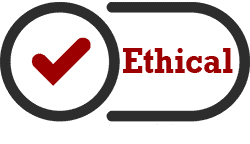
Want to know how your peers voted? We’ll send you an email with the poll results on
January 23.
Your opinion has been registered for the January 2024 edition of our monthly series of Ethics case studies titled What Do You Think?
Your vote is recorded as:
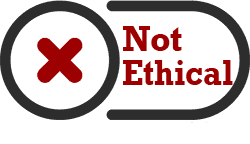
Want to know how your peers voted? We’ll send you an email with the poll results on
January 23.
A Review of the Facts
A public agency retains the services of VWX Architects and Engineers to perform a major scheduled overhaul of a bridge. VWX Architects and Engineers retains the services of Engineer Sam, a civil engineer, as its subconsultant to perform bridge inspection services on the bridge. Sam’s scope of work is solely to identify any pavement damage on the bridge and report the damage to VWX for further review and repair.
Three months prior to the beginning of the scheduled overhaul of the bridge, while traveling across the bridge, Police Officer B loses control of his patrol car. The vehicle crashed into the bridge wall. The wall failed to restrain the vehicle, which fell to the river below, killing Police Officer B.
While conducting the bridge inspection, and although not part of the scope of services for which he was retained, Sam notices an apparent pre-existing defective condition in the wall close to where the accident involving Police Officer B occurred. Sam surmises that the defective condition may have been a contributing factor in the wall failure and notes this in his engineering notes. Sam verbally reports this information to his client, which then verbally reports the information to the public agency. The public agency contacts VWX Architects and Engineers which then contacts Sam and asks Sam not to include this additional information in his final report since it was not part of his scope of work. Sam states that he will retain the information from his engineering notes but not include it in the final report, as requested. Sam does not report this information to any other public agency or authority.
What Do You Think?
Was it ethical for Sam to retain the information in his engineering notes but not include it in the final report as requested and to not report this information to any other public agency or authority?
Here is the result of our survey of your peers:
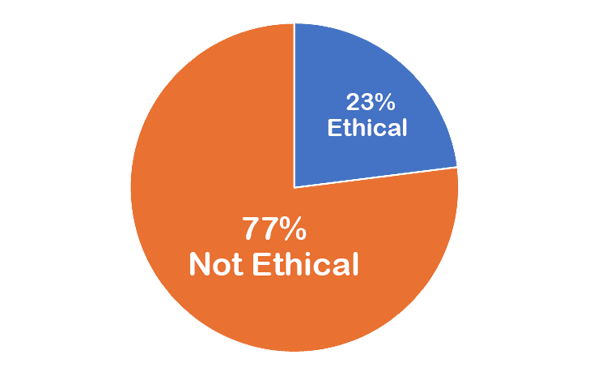
Applicable NSPE Code References:
II.1.c
Engineers shall not reveal facts, data or information without the prior consent of the client or employer except as authorized or required by law or this Code.II.3.a
Engineers shall be objective and truthful in professional reports, statements or testimony. They shall include all relevant and pertinent information in such reports, statements or testimony, which should bear the date indicating when it was current.III.1.a
Engineers shall acknowledge their errors and shall not distort or alter the facts.III.2.b
Engineers shall not complete, sign or seal plans and/or specifications that are not in conformity with applicable engineering standards. If the client or employer insists on such unprofessional conduct, they shall notify the proper authorities and withdraw from further service on the project.
Discussion
Engineers play a vital role in society in providing a higher degree of assurance that the products, systems, facilities, and structures used by the public are safe and effective. Engineers are frequently placed in situations where they must balance the extent of their obligations to their employer or client with their obligations to protect the public health and safety.
An example of this basic ethical dichotomy was considered by the NSPE Board of Ethical Review in Case No. 89-7 (which the Board also applied in Case No. 97-5). In that case, an engineer, Engineer A, was retained to investigate the structural integrity of a 60-year-old occupied apartment building, which his client was planning to sell. Under the terms of the agreement with the client, the structural report written by Engineer A was to remain confidential. In addition, the client made clear to Engineer A that the building was being sold “as is” and that the client was not planning to take any remedial action to repair or renovate any system within the building prior to its sale. Engineer A performed several structural tests on the building and determined that the building was structurally sound. However, during the course of providing services, the client confided in Engineer A and informed him that the building contained deficiencies in the electrical and mechanical systems, which violated applicable codes and standards. While Engineer A is not an electrical or mechanical engineer, he does realize those deficiencies could cause injury to the occupants of the building and so informs the client. Specifically, in his report, Engineer A made a brief mention of his conversation with the client concerning the deficiencies; however, in view of the terms of the agreement, Engineer A did not report the safety violations to any third party.
In deciding it was unethical for Engineer A not to report the safety violations to the appropriate public authorities, the Board noted that the facts presented in the case raised a conflict between two basic ethical obligations of an engineer: The obligation of the engineer to be faithful to the client and not to disclose confidential information concerning the business affairs of a client without that client’s consent, and the obligation of the engineer to hold paramount the public health and safety.
As noted in Case No. 89-7, there are various rationales for the nondisclosure language contained in the NSPE Code. Engineers, in the performance of their professional services, act as “agents” or “trustees” to their clients. They are privy to a great deal of information and background concerning the business affairs of their client. The disclosure of confidential information could be quite detrimental to the interests of their client and, therefore, engineers as “agents” or “trustees” are expected to maintain the confidential nature of the information revealed to them in the course of rendering their professional services.
Turning to the facts in this case, it is the Board’s position that the facts and circumstances in Case No. 89-7, while somewhat similar in nature, are significantly different than the facts in the present case. First, it is clear that, unlike Case No. 89-7, which involved facts and circumstances that were openly conveyed directly to Engineer A from a client, in the present case, the circumstances bearing on the public safety were revealed to the engineer as part of the engineer’s inspection and professional observations. Presumably, the manner in which information is conveyed to an engineer will have some bearing on the client’s expectation of the engineer’s maintaining the confidentiality of the particular information. In the present case, it is difficult for this Board to conclude that the client or the public agency could have had a genuine expectation of confidentiality, since nothing of a confidential nature was directly conveyed by the client or the public agency to Sam.
Another difference between the two cases is that in Case No. 89-7, there was a specific agreement between the engineer and the client to maintain the confidentiality of the information contained in the engineer’s report. In contrast, in the present case, there is nothing to indicate under the facts that an agreement exists between any of the parties to maintain the confidentiality of all or part of any reports prepared by the engineer.
Also in Case No. 89-7, there was the possibility of a dangerous condition developing at some point in the future, while in the present case, loss of life had already occurred. Importantly however, this circumstance needs to be contrasted with the circumstances in Case No. 89-7, where the client had essentially admitted serious code violations, while, in the present case, the possibility of a defect is merely a matter of speculation and surmise.
It is on this last point that the Board believes this case must hinge. Looking at the facts and circumstances in their totality, the Board is convinced that Sam acted reasonably under the circumstances by properly balancing the obligation of the engineer to be faithful to the client and not to disclose what might be considered by the client to be confidential information concerning the business affairs of a client without that client’s consent, and the obligation of the engineer to hold paramount the public health and safety.
The Board says this because there is nothing under the facts to indicate anything more than Sam’s general surmise and speculation about the cause of the structural failure of the wall. Sam’s observation appears to be based upon a visual inspection without anything more. There is nothing noted in the facts to indicate that Sam had expertise in structural engineering. While it may be appropriate for Sam to note such information in his field notes, to place this information in a final report would not be responsible and could unnecessarily inflame the situation. However, under no circumstance would it be appropriate for Sam to alter his field notes.
Also, while it might be appropriate for Sam to verbally report this information to Sam’s client, and for the client to report this information to the public agency, it is clear that Sam was retained to perform a specific task for which he was presumably competent. Clearly the prime consultant, which has overall responsibility for the project, is in a far better position than Sam to understand the interrelationships between various elements of the projects, including the history of previous work performed on the bridge, prior consultants, contractors, etc., in order to make an informed evaluation.
Therefore, the Board concludes that Sam did the appropriate thing in coming forward to his client with the information and also by documenting the information for possible future reference as appropriate. Under the circumstances it would have been improper for Sam to include reference to the information in his final report, particularly since it would have been based upon mere speculation and not careful testing or evaluation by a competent individual or firm. At the same time, the Board is of the opinion that Sam has an obligation to follow through to see that correct follow-up action is taken by the public agency. Only if the public agency does not take corrective action should Sam consider alternatives. Finally, for Sam to have reported this information to a public authority under the circumstances as outlined in the facts, before determining whether corrective action is taken, would have been an overreaction and could easily have risked jeopardizing the professional reputations of his client and the public agency.
The Ethical Review Board’s Conclusion

It was ethical for Sam to retain the information in his engineering notes but not include it in the final written report, as requested, and not report this information to any other public agency or authority as long as corrective action is taken by the public agency within a relatively short period of time.
BOARD OF ETHICAL REVIEW
James G. Fuller, P.E.; William E. Norris, P.E.; Paul E. Pritzker, P.E.; Richard Simberg, P.E.; Jimmy H. Smith, P.E., Ph.D.; C. Allen Wortley, P.E.;Donald L. Hiatte, P.E., Chairman
Note – In regard to the question of application of the Code to corporations vis-a-vis real persons, business form or type should not negate nor influence conformance of individuals to the Code. The Code deals with professional services, which services must be performed by real persons. Real persons in turn establish and implement policies within business structures. The Code is clearly written to apply to the Engineer and it is incumbent on a member of NSPE to endeavor to live up to its provisions. This applies to all pertinent sections of the Code. This opinion is based on data submitted to the Board of Ethical Review and does not necessarily represent all of the pertinent facts when applied to a specific case. This opinion is for educational purposes only and should not be construed as expressing any opinion on the ethics of specific individuals. This opinion may be reprinted without further permission, provided that this statement is included before or after the text of the case.


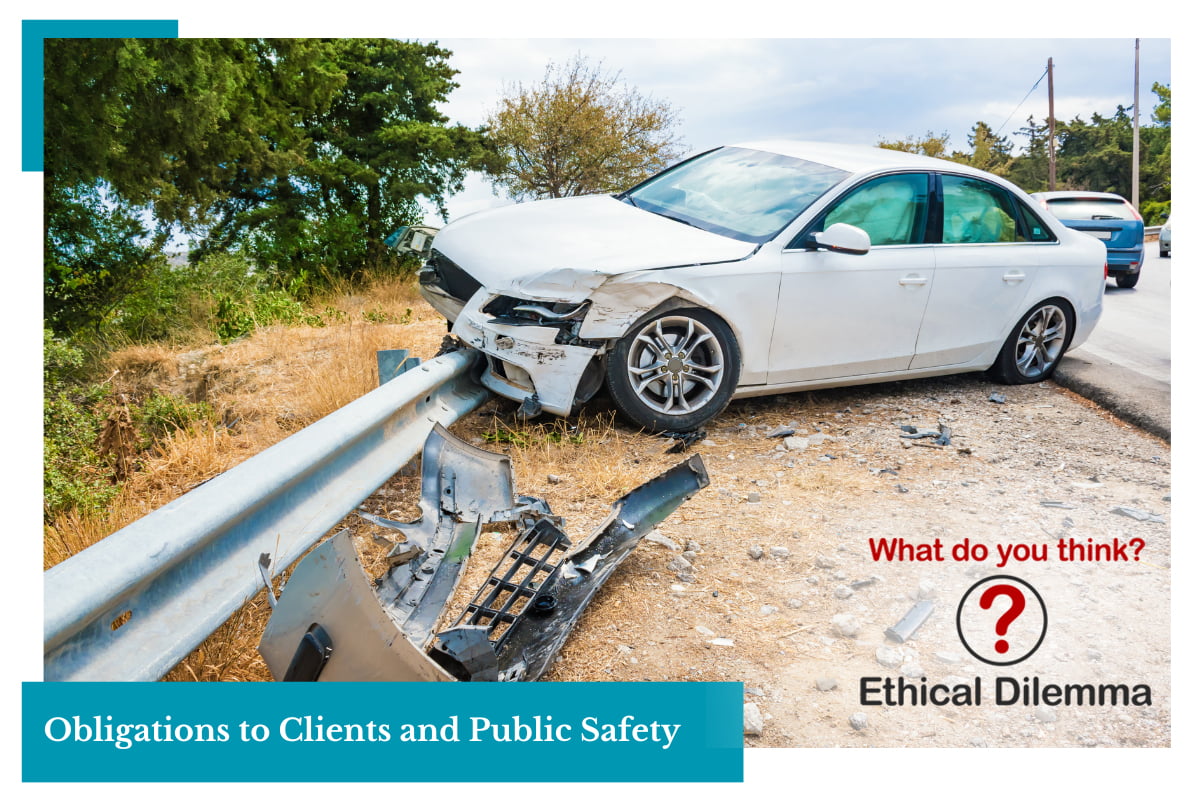
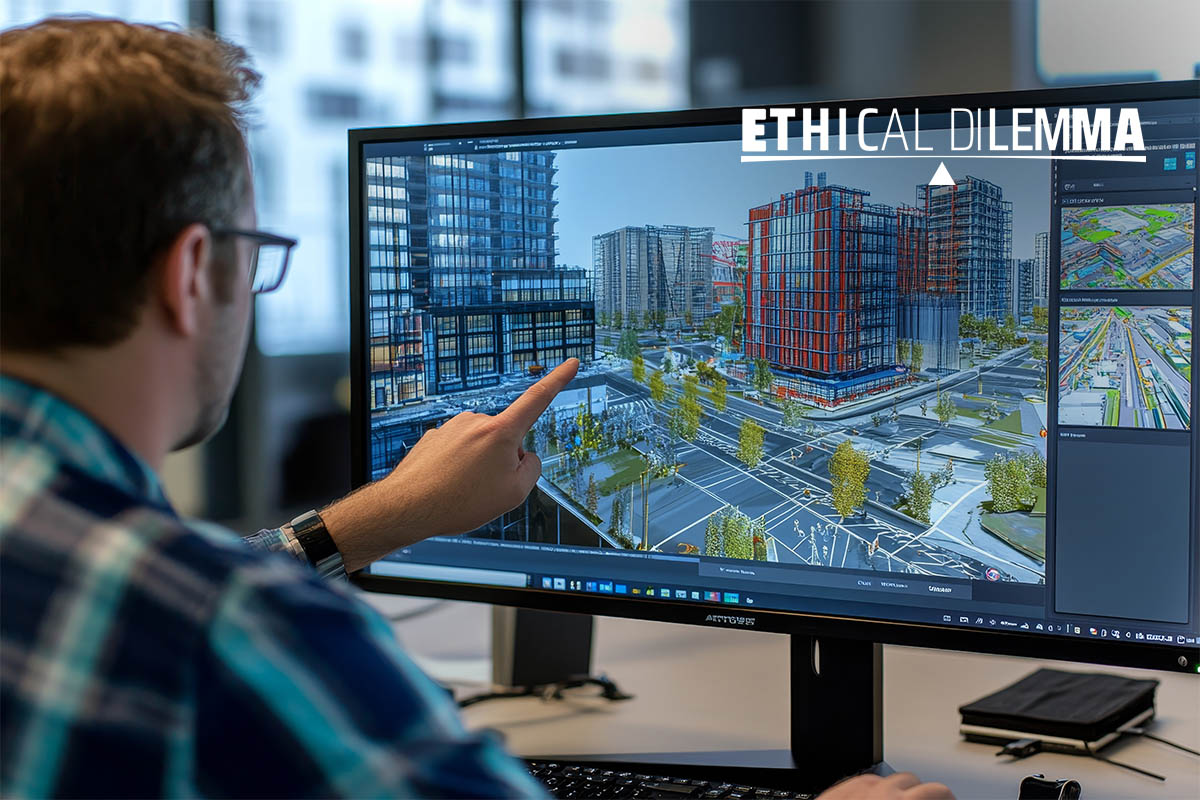





This presentation of the situation is incomplete. There is nothing to indicate:
“ as long as corrective action is taken by the public agency within a relatively short period of time.” Which is stated in the discussion of the Board’s decision.
Also, Sam is a civil engineer. It is expected he knows about structural issues. Otherwise, an “engineering aid” (no PE) could have looked for “pavement damage”.
This is not a good presentation of the facts relative to the detail provided in the Board’s response.
Also, “If you see something, say something”.
I understand the board’s position on this with the explanation given, but I take issue with this statement: “…as long as corrective action is taken by the public agency within a relatively short period of time.” There was nothing in the presentation of the case that indicated the public agency had any such intention or that Sam planned to keep an eye on the development of the situation. Rather, the fact that the public agency requested the information not be included in the report suggests an intent to keep the information hidden. Omitting the observation from the report implies an intent to obscure this information from the forensic team investigating the death of Police Officer B for the purpose of avoid any appearance of culpability. I stand by my vote of Not Ethical because I think Sam’s observation should have been made available to the forensic team so that someone with more expertise could choose to investigate the speculation.
I understand the board’s position on this with the explanation given, but I take issue with this statement: “…as long as corrective action is taken by the public agency within a relatively short period of time.” There was nothing in the presentation of the case that indicated the public agency had any such intention or that Sam planned to keep an eye on the development of the situation. Rather, the fact that the public agency requested the information not be included in the report suggests an intent to keep the information hidden. Omitting the observation from the report implies an intent to obscure this information from the forensic team investigating the death of Police Officer B for the purpose of avoiding any appearance of culpability. I stand by my vote of Not Ethical because I think Sam’s observation should have been made available to the forensic team so that someone with more expertise could choose to investigate the speculation.
As with many of these What Do You Think cases, there is missing / incomplete information provided. My first thought was Sam, a civil engineer was practicing outside his area of competence as a bridge inspector, but the scope was pavement inspection which is within a civil engineer’s purview. The discovery of an apparent pre-existing defective condition was noted and while not within his immediate expertise, may be considered an issue of public safety.
Of issue here is the last sentence of the NSPE finding as ethical “…and not report this information to any other public agency or authority as long as corrective action is taken by the public agency within a relatively short period of time.”. The time period was not part of the case study presented to the reader and withholding this information indefinitely would be unethical.
As a PE who performs field inspections, I find the “stay in your lane” mentality deeply disturbing. As a mechanical engineer hired to inspect fuel systems, I have reported substantial damage to reinforced concrete structures (definitely outside of my inspection and engineering expertise) because I was concerned that even *if* the overall structure was secure, the large chunks of concrete hanging off of it over walkways and fuel piping constitute a hazard to personnel and environment. More concretely (and in the news as well), should the Michael Baker inspectors have ignored a crack in a girder while they were inspecting cables on the Hernando De Soto bridge?
As with MJD (above), there is no way for the inspector to know whether there is something in the works to correct a problem.
You don’t have to put it in the customer’s report if they don’t like it. But you can ask the right people questions if *you* don’t like it.
If you see something, say something.
Thank you Thomas Proios, P.E.
You presented everything I was going to write (very well) and saved me the time of writing it myself.
Sam should look to taking the information as a concerned citizen to the police department and the people investigating the death of the police officer. He does not have to so anything more than bring his insights to the investigating team. They can than either run with it or decide that it is irrelevant to the officer’s death.
With that done, he has done his civic duty to protect the people who use that bridge everyday.
I also agree, that this case is incomplete is the information that was given and whether the agency was trying to cover up their own failings.
I voted Not Ethical. Had there been no accident it would have been ethical. However the facts stated that Sam felt that the pre-existing condition may have influenced the accident. With the accident I felt reporting to the forensic team investigating the death of Police Officer B is required. The facts stated this was clearly NOT DONE.
I voted ethical the civil engineer has gone thru structural courses, but not necessary is majoring in structures visual inspection is nothing but visual, it was good to comunícate his view and follow the task as describe by his assignment. Was ethical as he as good engineer recognized
That a visual opinion even by an expert is a visual inspection
One thing I learned in college was that “ One hour of testing is worth One hundred expert’s opinion
I voted not-ethical and concur with all the comments above. I agree with simple premise mentioned: if you see something , say something..Shame on the agency and prime consultant for conspiring to keep Sam’s observations out of the report. Even if what he reported did not contribute to the accident, it puts a bad light on the ethics of both.
Based on the survey results it appears the Boards conclusion may be questionable.
Also,
This information was not presented in the original reveal of this situation. How was Sam to know if this occurred. Never rely of “future” statements. Verify/confirm facts and actions.
“as long as corrective action is taken by the public agency within a relatively short period of time.”
Still believe this is a very poor decision by the Review Board. Why would anyone not disclose information that could be helpful for future review of a structure. Some may construe it to be opinion not based on fact by the engineer, but the observational opinion should be noted for further review and clarification. It gives the appearance that something is being hidden.